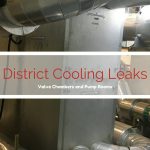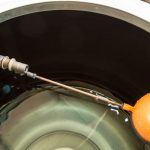In the booming hotel industry, a primary facility for a hotel is to provide a good, tasty, restaurant for use by its residents. Behind every restaurant is a large, busy, commercial, kitchen, turning around hundreds of meals a day, but with the amount of work and activity that takes place, there is always the potential for problems, especially hotel kitchen leak.
Hotels will often have a water management plan not only recording estimates, for a specified timescale, of the water usage for the hotel and what the actual consumption was, but also indicating any fluctuations. A sudden increase in the water usage could indicate a leak.
Leaks can have a variety of causes, but in a kitchen environment the key ones would include the following:
- Leaking taps;
- Blocked, leaking or backed up food waste pipes;
- Leaks from dishwashers, including the water pipes within the machine as well as the seals on doors and covers;
- Sink pipework – either a leaking pipe or a faulty seal or valve;
- Overflowing floor drains from trapped oil, fatty residues and food scraps washed down sink pipes
- Underground pipe leaks;
The earlier leaks mentioned above, will have visible signs, for example, puddles of water will be noticed either underneath sink areas or around dishwashers; there will be the irritating sound of a constant drip from a leaking tap; or a sink full of dirty water that will not drain away. Some causes can be fixed quite swiftly, however, with some leaks and blockages, the location of the leak will be far harder to detect, particularly if all of the pipework is not visible and may be laying behind cupboards or industrial cooking equipment, in wall cavities or underground.
A highly expensive rectification problem, involving water leaks for kitchens, is the underground pipework.
As well as the normal pipeline system, many large commercial kitchens use modern drainage systems where multiple floor drains are located at key points around the kitchen floor for the draining of industrial cooking equipment such as large Bain-Maries. These large drain pipes all interlink underground and then lead to a main outside drainage system. However, if these pipes spring a leak, or a blockage occurs due to the amount of food waste and chemicals that find themselves going down the drain, problems can arise.
So, how can any kitchen know if they have a leak in an underground, or other hidden pipe and importantly, how do they identify the location of the leak without digging up the whole floor.
Thankfully, with new innovative technology that has been designed to assist businesses, particularly in the commercial sector with their large kitchens, specialist scanning equipment can now be used to identify the smallest of leaks. With infrared and thermal imaging technology, the building – including walls, ceilings and floors – are scanned and any leak or damp patch will be identified. This not only informs you that you have a leak, but pinpoints the location. In addition, as an ongoing proactive approach, a sensor system can be installed into the pipework system to alert you to the occurrence of any leak in the future, ideal with your underground kitchen drains and pipelines.
Leaking or long-standing water in any kitchen can result in bacteria and health risks, not a ‘special of the day’ you want added to your restaurant menu – so keep the Chef cooking and the customers happy and get LeakDTech in to scan your pipelines!
For information on how we can help if you suspect a leak, consult LeakDTech’s professionals now!
Contact Us For More Information




